ASHLEY CHIAM

Ashley Chiam
IMMERSE IN ART THAT EXPLORES WHAT IT MEANS TO MAKE A PLACE
“Placemaking art, which aims to bring communities in a specific area together, is unquestionably gaining prominence in Singapore. Its prevalence is increasing as we speak, with commissioned murals becoming particularly effective across our little island, sponsored by land developers, owners, and proprietors.
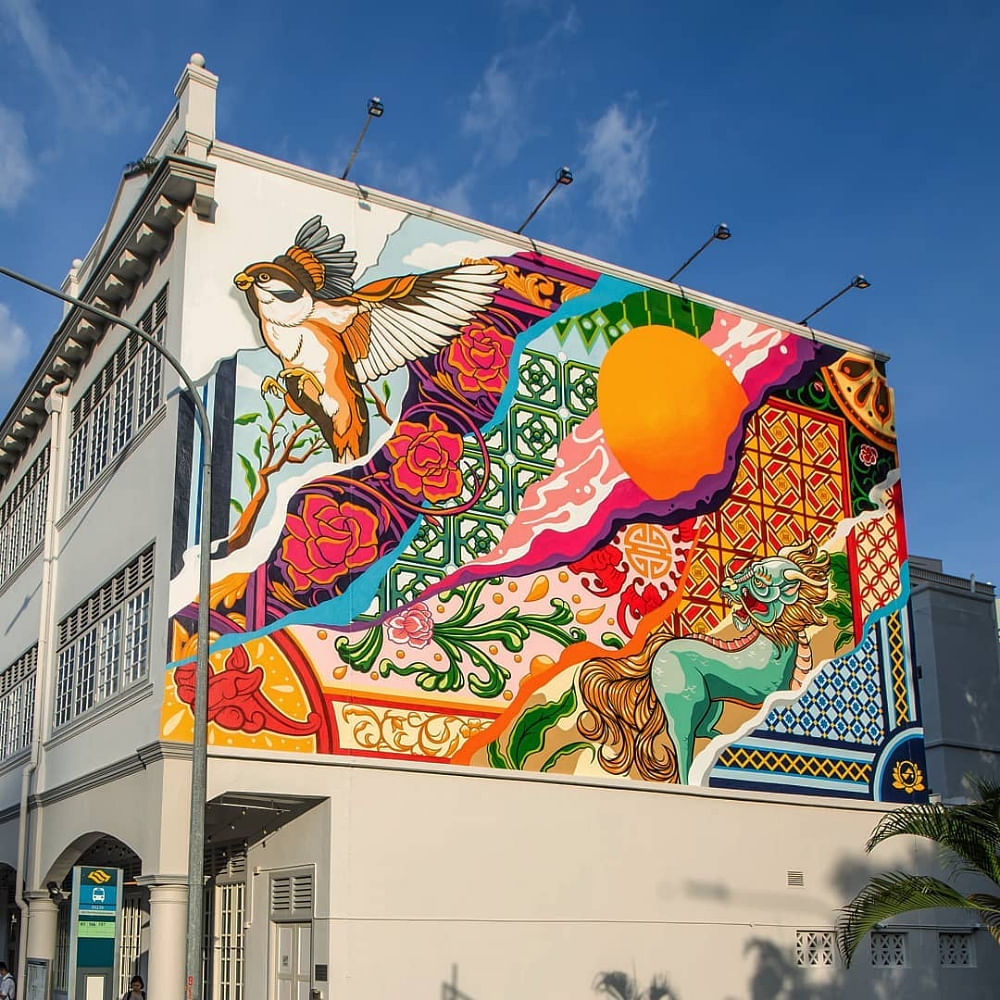
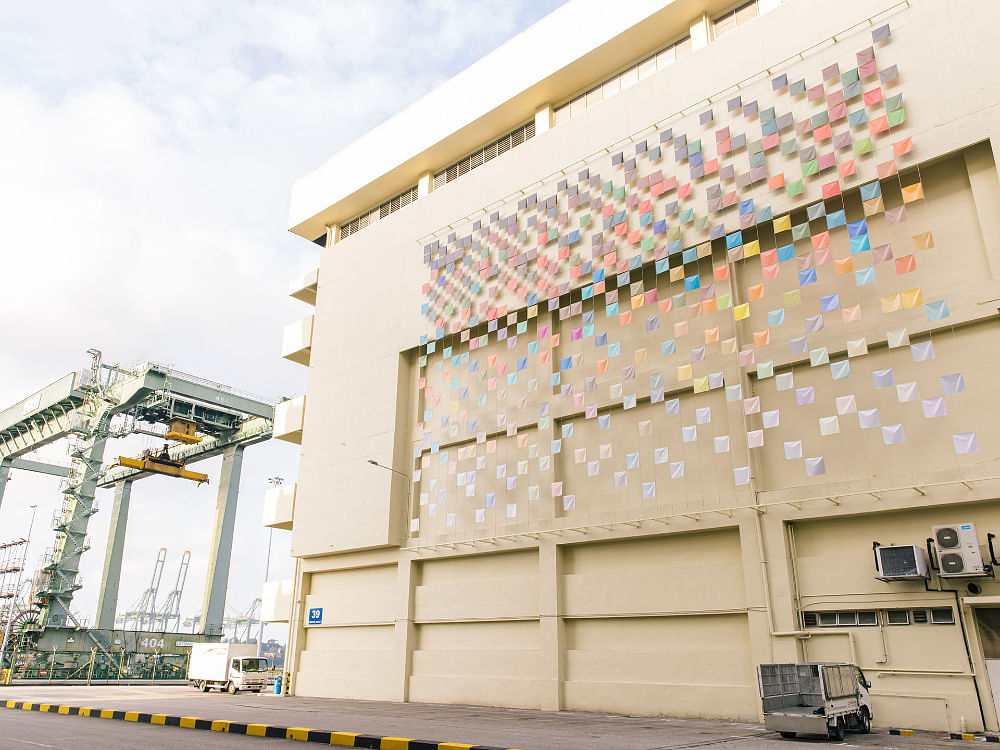
Sea of Flags installation by Grace Tan, exhibited as part of Singapore Art Museum’s public art trail Portraits of Tanjong Pagar.
MORE ART WILL RESPOND TO ITS SURROUNDINGS
“With society adopting a more inward-looking approach after years of internationalist thinking, placemaking art is undoubtedly becoming an upward trend. Visual art that defines, takes influence from, and is created specifically in response to the space it occupies will be a defining keystone of current trends. Reflecting the rich local heritage will be key as well. This is evident in various initiatives of placemaking art, such as the Singapore Art Museum’s Portraits of Tanjong Pagar (pictured above).”
JUNE YAP
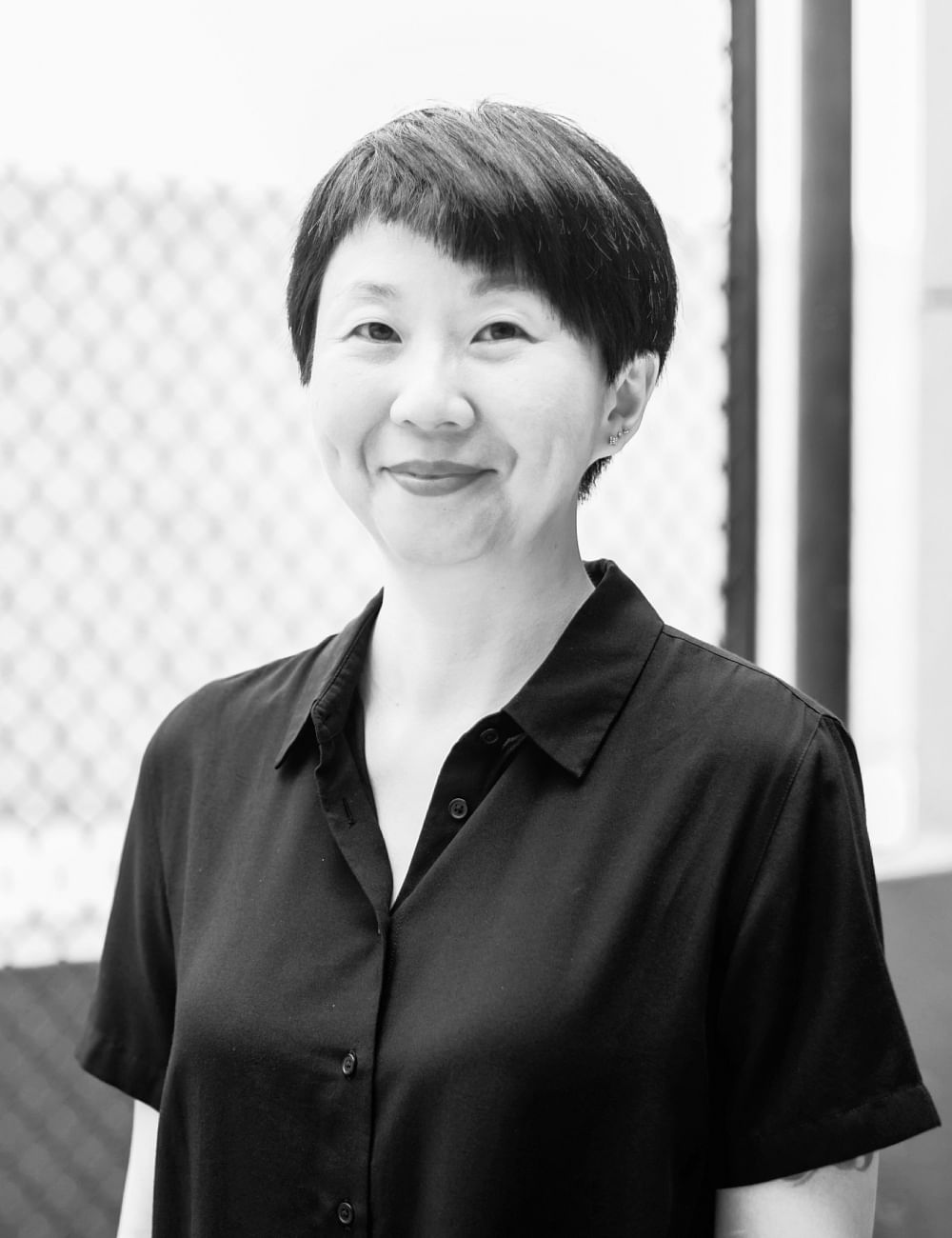
June Yap
June Yap is the Director of Curatorial & Collections at the Singapore Art Museum (SAM), which showcases contemporary art from Southeast Asian perspectives. In her role, Yap oversees the museum’s exhibitions and curatorial programs. Her previous positions include Guggenheim UBS MAP Curator (South and Southeast Asia), Deputy Director and Curator at the Institute of Contemporary Arts Singapore, LASALLE, and curator at the Singapore Art Museum.
ART WILL FEATURE MORE PERSONAL AND COLLECTIVE REFLECTIONS
“The effects of climate change have become increasingly palpable in recent years, impacting regions worldwide. Consequently, the discourse surrounding our planet and immediate environments becomes unavoidable, manifesting in heightened awareness and advocacy for sustainable and reparative actions, as well as in the reimagining of our collective futures. The Singapore Biennale 2022, named Natasha, opened at the tail end of the global pandemic, urging reflection on our personal and collective relationships with natural forces and the technologies we create.
Artists, too, have delved deeply into these conditions, and SAM contributes to this broader conversation by featuring the work of Robert Zhao Renhui (pictured below) for Singapore’s presentation at the Biennale Arte in 2024. Robert’s distinctive practice unfolds at the intersection of nature and culture, exploring narratives of the natural world and revealing insights into secondary forests as sites for regeneration and regrowth.”
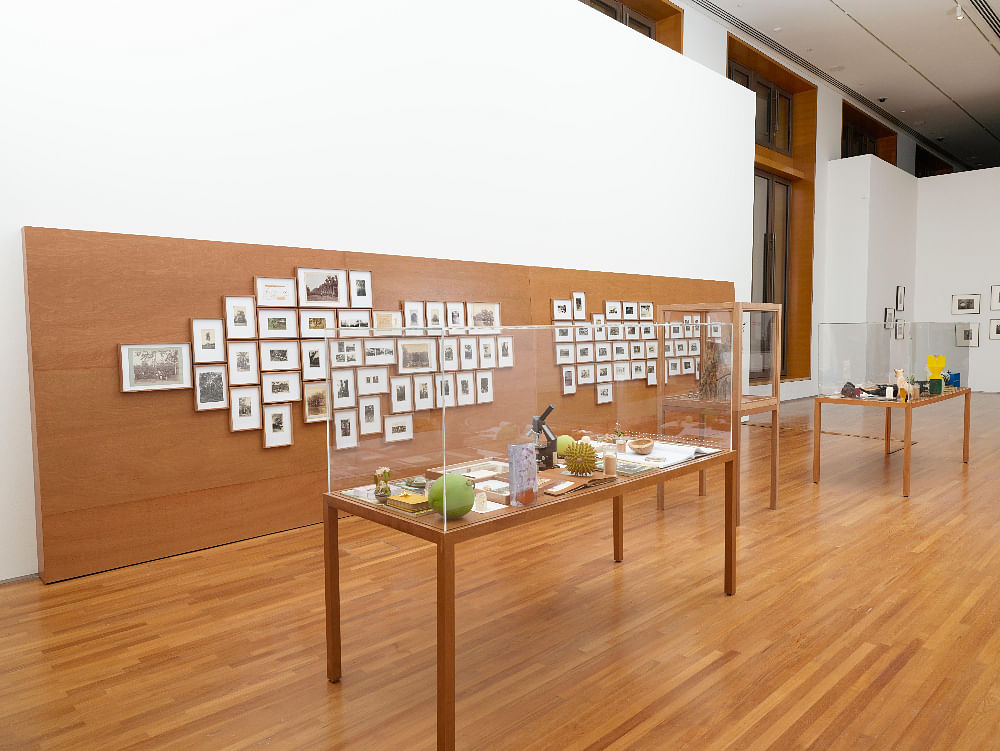
A view of Robert Zhao’s installation, The Bizarre Honour (2017)
THINK ABOUT CONTEMPORARY TECHNOLOGY
“Running parallel to the discourse on ecological futures is the conversation about our technological advances, more specifically, the contemporary drive fueled by the expansion of artificial intelligence (AI). To keep pace with and shape the discourses surrounding this, SAM recently launched an exhibition titled Proof of Personhood: Identity and Authenticity in the Face of AI (pictured below) that raises the question: What is humanity in an AI-driven and hypermediated world?
Seeking answers while bringing to light more questions, the exhibition navigates through artworks by artists from Singapore and beyond. These works engage with synthesized images, biometric and genomic data, and online existence in the context of deepfakes and contemporary celebrity culture.
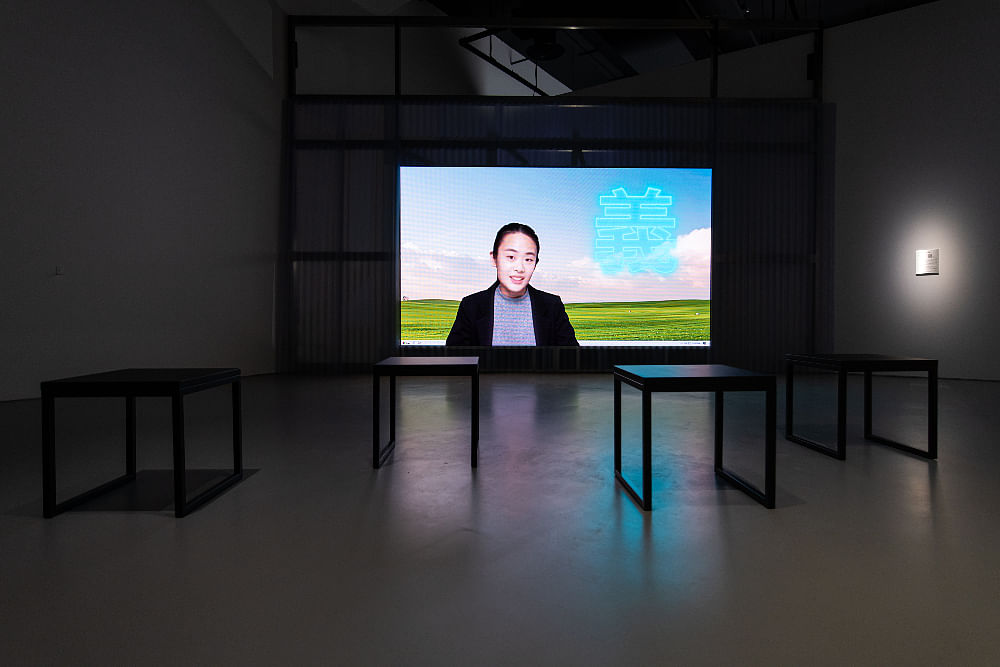
In a fascinating turn, the female-gendered experience is central to this contemplation of technological representation, often manifesting as the alluring face of chatbots and artificial presences that simultaneously confronts us with the ongoing problem of female objectification.”
GEAR UP FOR MORE IN-DEPTH PERSPECTIVES AND COLLABORATION
“What is intriguing about these topics of ecology and technology is how they necessitate transdisciplinary attention, and how artists actively embrace collaborative and well-informed practices in response to them. The contemporary artists SAM collaborates with delve into these globally circulating yet locally significant subjects. Moreover, these subjects have historical connections to traditional craft methods, which are experiencing a resurgence in both frequency and significance.”
CLARA PEH
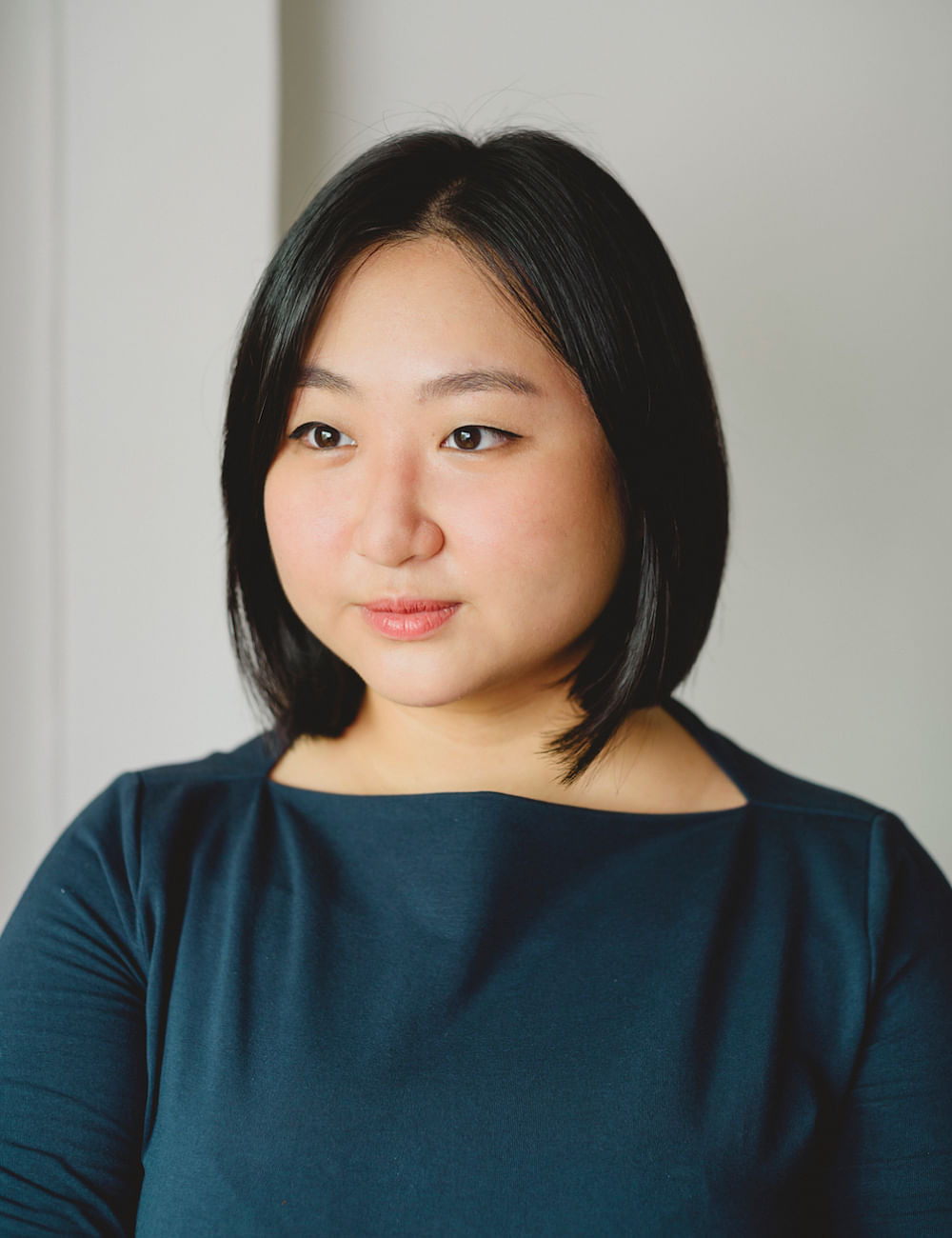
Clara Peh
As a Singapore-based independent curator and art writer, Peh’s interests centre on emerging technologies, experimental practices, and interdisciplinary approaches. She is also the Founder of NFT Asia – an open and inclusive community centred on uplifting Asian and Asia-based artists and creatives worldwide – which has gathered more than 3000 members on Discord and over 22,000 followers on X.
Notably, Peh curated Art Dubai Digital 2023, featuring 20 new media presentations with the aim of bridging art and technology. You might also recognize her from Notes From The Ether, a digital art exhibition at the Art Science Museum that she co-developed as a guest curator.
ART INSTITUTIONS WILL INCREASINGLY INVEST IN NEW MEDIA ART
“Digital and new media art have garnered increased public interest and attention since 2020/2021, fueled by our growing reliance on technology (prompted in no small part by the global pandemic) and the speculation around NFTs. The introduction of generative AI tools, such as DALL-E and Stable Diffusion, and their rapid development challenge not only our understanding of digital art but art in general.
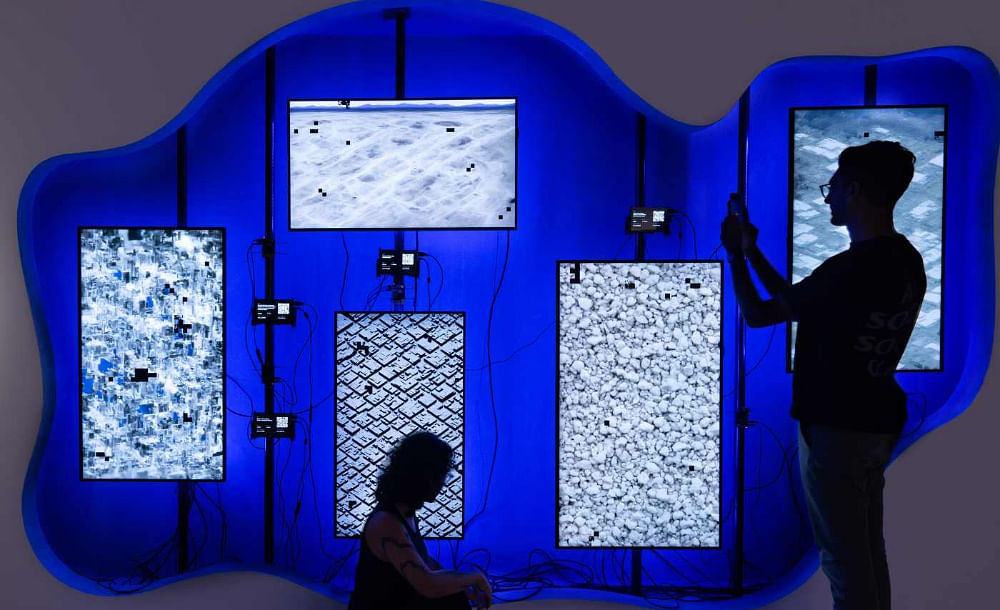
ENZYME 1.2 (2023) created by the artistic duo known as jo+kapi, consisting of Jo Ho and Kapilan Naidu, was exhibited at the Notes From the Ether exhibition.
While the crypto market has experienced corrections since the initial hype around NFTs in 2021, institutions are gradually increasing their involvement and investment in NFTs and, more broadly, new media art. Institutions like KADIST, MoMA, LACMA, Centre Pompidou, among others, have added new artworks as NFTs to their collections in this year alone. Others, such as ArtScience Museum, have dedicated exhibitions to exploring shifts within digital art (Notes From the Ether, which I co-developed as a guest curator), or areas tangential to it, such as gaming at the MMCA in Seoul (Game Society) and the Julia Stoscheck Foundation (WORLDBUILDING: Gaming and Art in the Digital Age).
As our relationships with technology become increasingly intimate and interdependent, I believe new media art will only grow in importance. It serves as the most direct reflection of our time.”
EMBRACE A WAVE OF NEW MEDIA ART FROM SOUTHEAST ASIA
“It is challenging to predict, but I hope to witness increased support for new media artists working in Southeast Asia. Singapore-based artists, such as Andreas Schlegel, have played a vital role in the creative coding and generative art community for decades, and I aspire to see more recognition for their work, alongside emerging artists like Jo Ho, who are pioneering new grounds.

Putin’s Path to Redemption by Rimbawan Gerilya
I am also closely following works that involve simulated environments, with artists like Rimbawan Gerilya and Chong Yan Chuah, with whom I have collaborated across several exhibitions.
Additionally, I anticipate ongoing discussions surrounding digital photography and imaging techniques in the coming year. As an example, I organised a symposium with DECK in November titled The Unstable Image.”
SEET YUN TENG
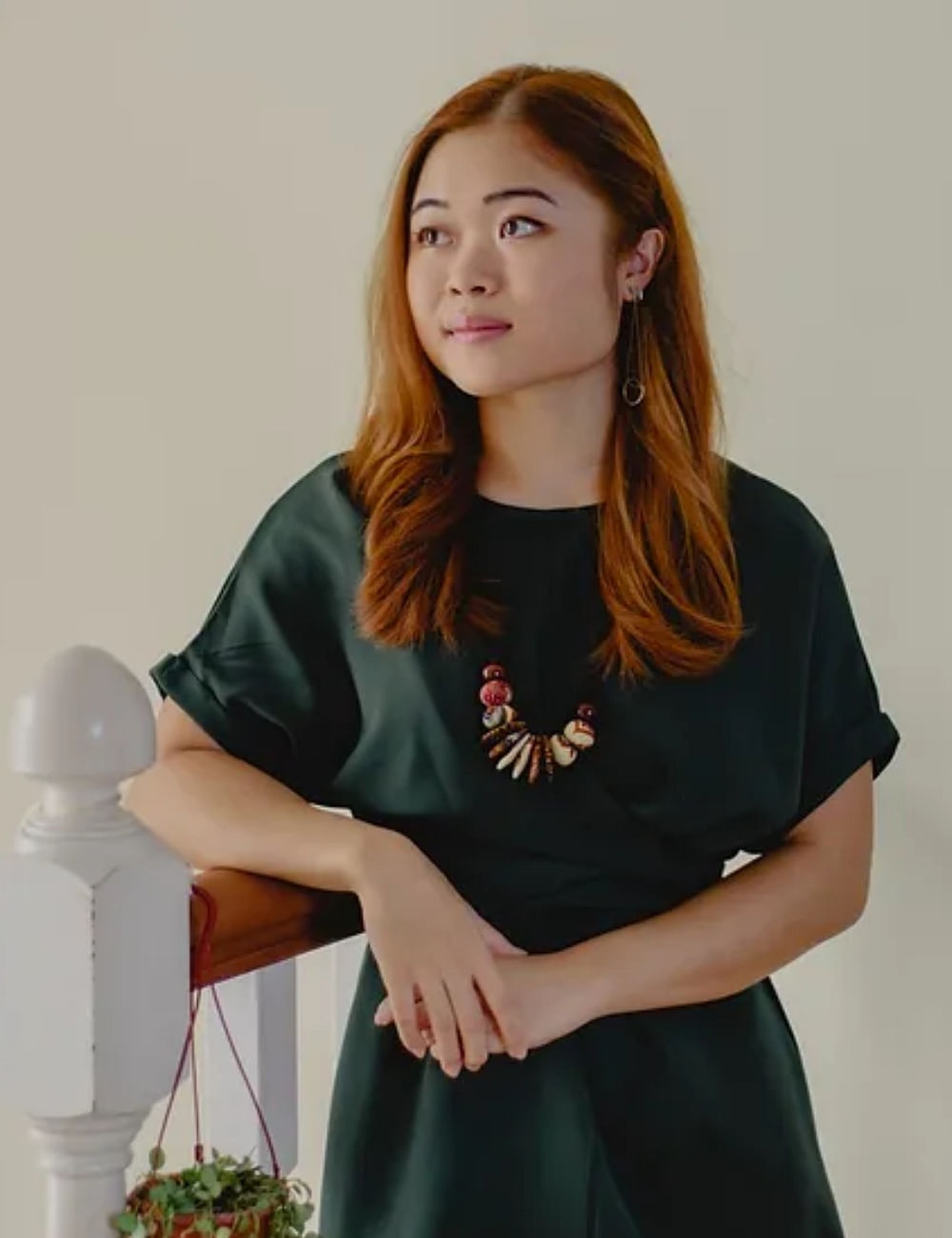
A recipient of the 2023 National Arts Council (Singapore) Scholarship (Postgraduate), Seet is an independent curator, producer, writer and artist from Singapore currently studying in London. Some of Seet’s most recent projects include Sacrificial Protection, which exhibited the works of local artists Chok Si Xuan and Victoria Hertel at DECK. Seet has also curated Lucy In The Sky With Debris, an interdisciplinary research and visual art project by artist Isabella Ong exploring the “visibility of orbital debris.”
EXPECT MORE ART IDEAS CENTRED AROUND OBJECTS
“I’ve noticed that there are many artists who anchor their work in objects, physical experiences and experimentations with materiality… despite the range of conceptual interests or thematic subject matter. Objects act as important vehicles to address the social-political frames in which they are imbricated. Take artist Anthony Chin’s works which use common materials to make visible underlying structures of power; objects from everyday life also speak evocatively about social relations, such as in the practices of Genevieve Leong or Lai Yu Tong.
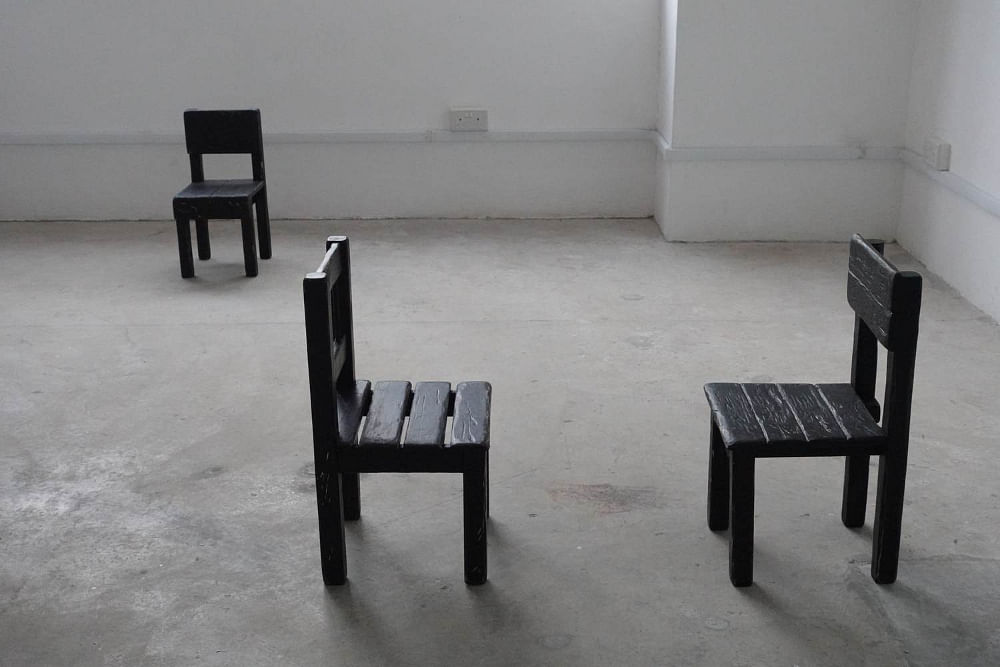
Lai Yu Tong’s Children’s Chairs (2022)
At the same time, the sensory qualities of encountering physical objects in space remain rich sites for exploration. For example, Aki Hassan’s sculptural installations compellingly use forms and objects in space in relation to the body to speak to strengths, resistance and precarity.
I also look to the work of Weixin Quek Chong where she uses tactile, audio-visual and sometimes performative elements to evoke sensorial experiences and challenge constructed binaries.”
IMMERSE IN ART THAT SITS BETWEEN THE DIGITAL AND THE MATERIAL
“I’m particularly interested in artistic practices which tackle issues of technology, computation, virtuality and futurity through a steadfast physicality in the material world. For example, Fyerool Darma’s works (pictured below) speak to the circulation of visual culture across the spaces of the Internet, but also draw on materials from popular culture, archives, textiles, music and literature.
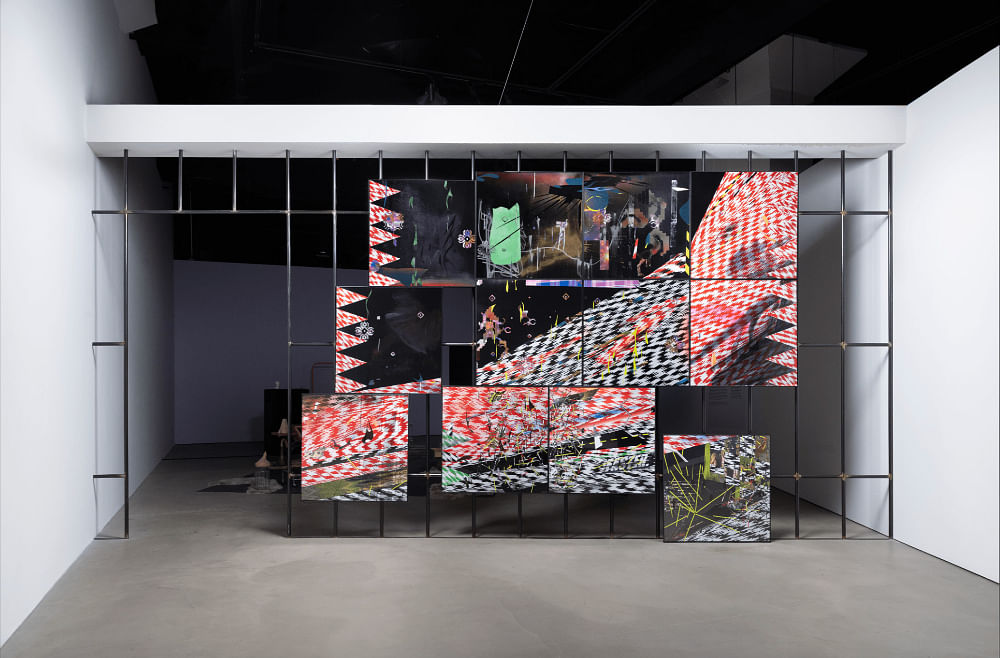
Fyerool Darma’s installation Total Output featuring Aleezon, Berukera, Billyx, Jasim, Lee Khee San, Le Luhur and RawanxBerdenyut (2023) was an exercise in remixing visual vocabularies drawn from open source archives.
Being currently based in London, I’ve observed a rise in exhibitions and artistic practices in this vein as well, revelling in the friction between the digital and the material.”
TAN SIULI
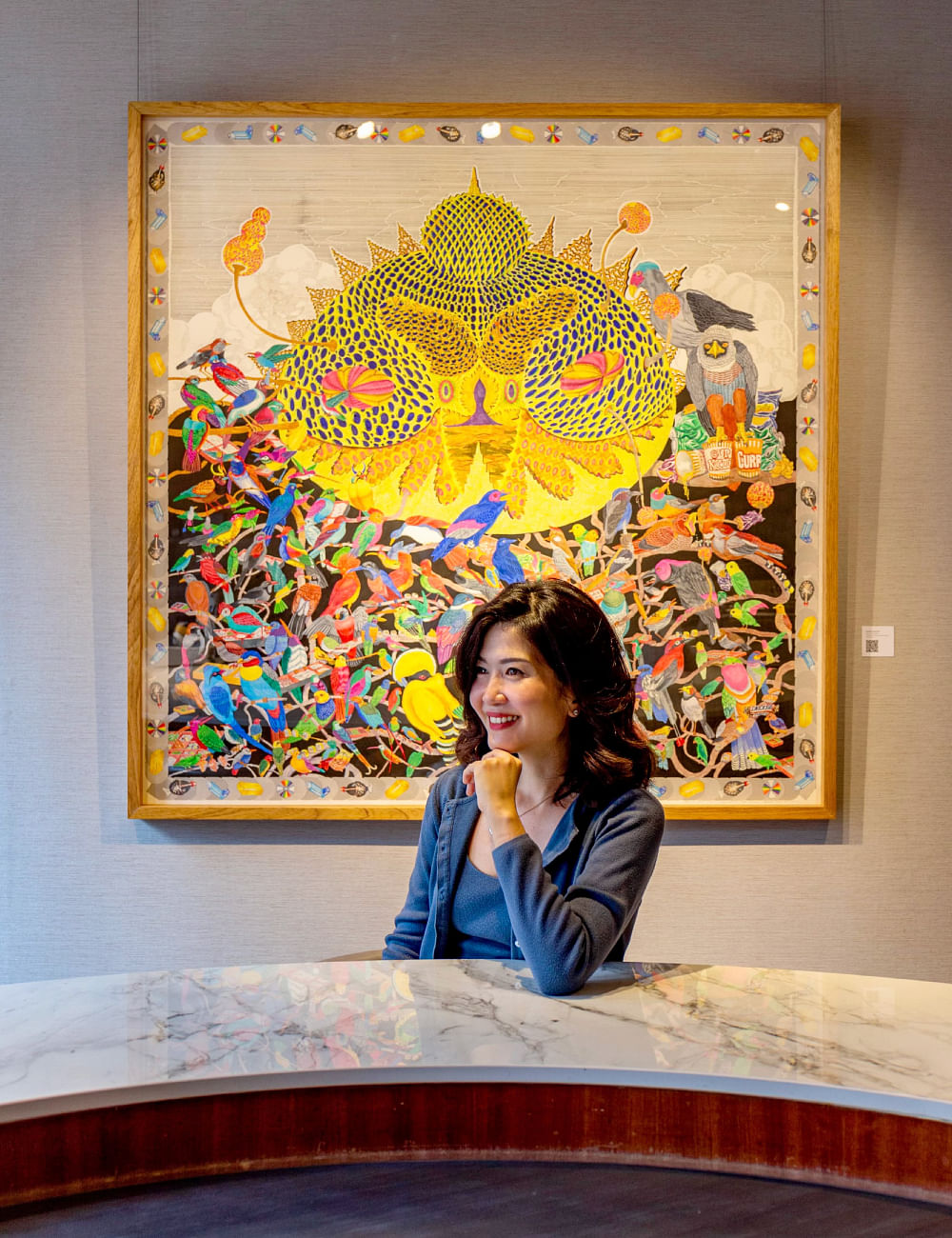
Tan Siuli
Tan Siuli is the Art Lead and Curator at Appetite, the research arm of Michelin-starred Nouri by Chef Ivan Brehm. Nothing short of a unique dining spot, Appetite boasts a Kitchen, which offers an experimental dining experience; a laid-back Record Lounge and Art Gallery in hopes of unearthing the connections between gastronomy, visual arts, and music.
Most recently, Tan curated the exhibition Short Stories at Appetite, which brought together the evocative black-and-white photographs of 1960s Singapore by chef-photographer Hor Kwok Kin and vibrant abstract paintings by Wong Keen.
A RISE IN NON-TRADITIONAL ARTS SPACES
“Space is already at a premium in Singapore, and if you talk about traditional ‘white cube’ or ‘white wall’ spaces equipped to present art, that narrows down the options even further.
I’m not surprised that the art community has turned to unconventional spaces such as vacant shop lots and warehouse spaces to host exhibitions, or in the case of Appetite, a shophouse space that brings together an art gallery, a kitchen as well as a music lounge. There’s a different poetics at play when you encounter art in such unconventional spaces, a different set of relations. It’s really nice to see more of such independent spaces and voices emerging as an alternative to the largely institution-driven scene in Singapore.”
THE APPEAL OF FIGURATIVE PAINTING WILL BROADEN
“In my opinion, figurative painting – especially that with a touch of surrealism – will continue to be popular. A lot of dominant narratives are being challenged, in art as well as in wider society and culture, and figurative painting is a powerful medium to tell these stories.

Khairulddin Wahab
An example is the work of Singapore artist Khairulddin Wahab (pictured above), which you can see at Appetite from November 21 onwards. Khairulddin’s lush, lyrical canvases invite us to reconsider a lot of the colonial frameworks we are accustomed to, as he seeks to ‘re-enchant’ our relationship with the land and the natural world.
I think artists working with what we understand as ‘craft’ or craft-based approaches will also come to the fore. The pandemic certainly heightened our appreciation for touch, making, and connection – something explored by Yvonne Tham (CEO of the Esplanade) in her exhibition A Year Made Object (2022). This year’s edition of the Asia NOW Art Fair in Paris also put the spotlight on fibre-based art, with the curated exhibition centring on textiles as a means of understanding culture, identity formation, the relationship between ‘craft’ and ‘art’, and the collective dimension of artistic practice.
I am particularly interested in artists who approach traditional art or ‘craft’ forms with a contemporary sensibility: one to watch is Alexander Sebastianus Hartanto, who works with textile (pictured below), photography, installation and performance. We will be presenting some of his works at Appetite in 2024.”
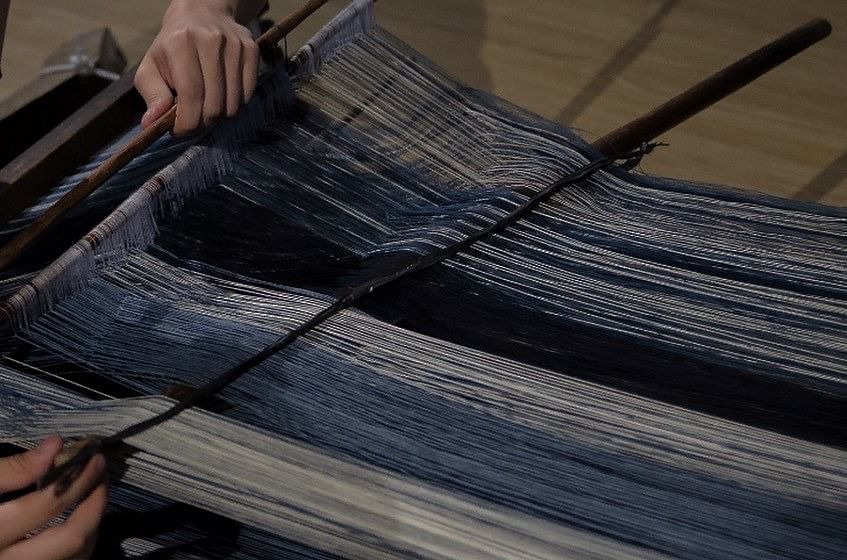
The textile art of A. Sebastianus Hartanto
GEAR UP FOR A DEEPER LOOK AT DIASPORA AND THIRD CULTURE ARTISTS
“I would like to see more attention given to diaspora or third culture artists. In my experience, they occupy a very interesting position ‘in between’, and from this vantage point, are able to make connections across time and space that we may take for granted or overlook.

A still from Astria Suparak’s Tropicollage, currently on display at Appetite as part of its ongoing exhibition, New Tropics.
Our current exhibition New Tropics at Appetite (which ends February 18) presents works by Tammy Nguyen and Astria Suparak, both based in USA, that invite us to consider the region that we’re based in – its histories as well as present-day developments – in a new light.”
EMI EU
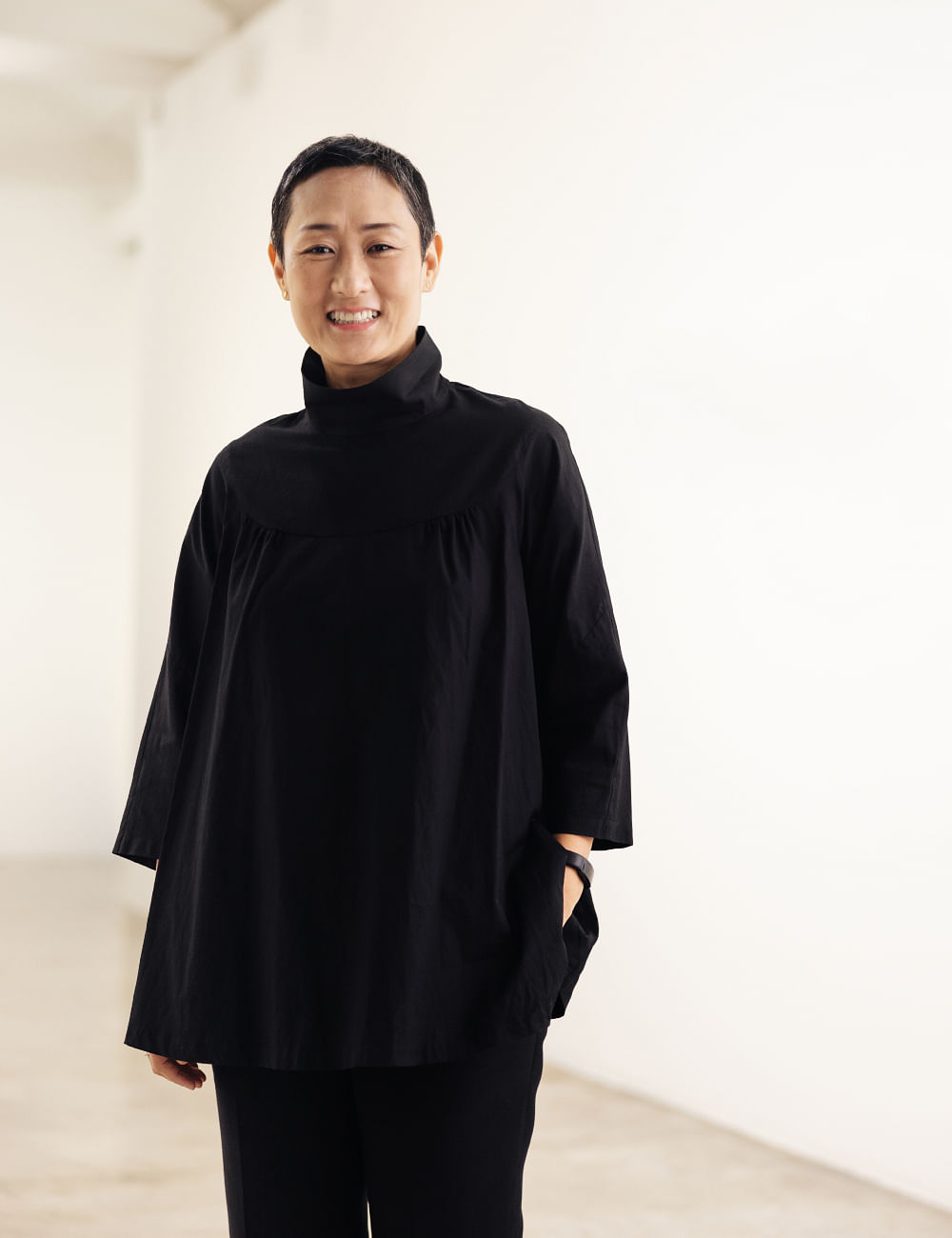
Emi Eu
Emi Eu is Executive Director of STPI – Creative Workshop & Gallery. Specialising in promoting artistic experimentation in the medium of print and paper, the institution has hosted some of the most celebrated international and local artists such as Alfredo and Isabel Aquilizan, Heri Dono, and Amanda Heng. Under her leadership, STPI has became the first gallery in Singapore to participate in Art Basel in 2013 and continues to benefit from Eu’s appreciation of artistic collaborations within Asia and the West.
FASHION AND DESIGN WILL INTERSECT MORE WITH ART
“In the recent few years, we have seen female artists and artists of different backgrounds being celebrated more than before and gaining prominence. Artists such as Takashi Murakami, Kaws and Daniel Arsham who have crossed over to fashion and design will always be favoured.”

Names such as Takashi Murakami will always be favoured in the art world.
WITNESS AN ASIAN GROWTH IN ART
“Art fairs and markets are becoming more regionalised and city-centric, hence the artists from those cities such as London, Seoul and Tokyo will gain more visibility and demand. Even with China’s art market softening, we are still seeing growth in the overall Asian market – with Art Basel Hong Kong still holding Hong Kong as top city. Singapore is also continuing its efforts to become an art hub for Southeast Asia with ArtSG as well as S.E.A. Focus going strong into its sixth edition during Singapore Art Week this year.”

